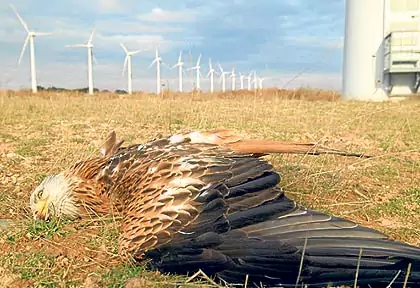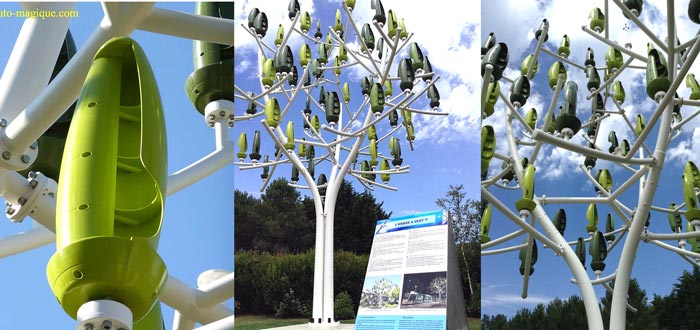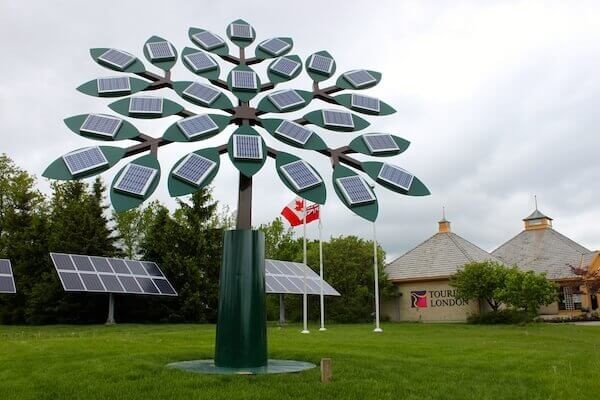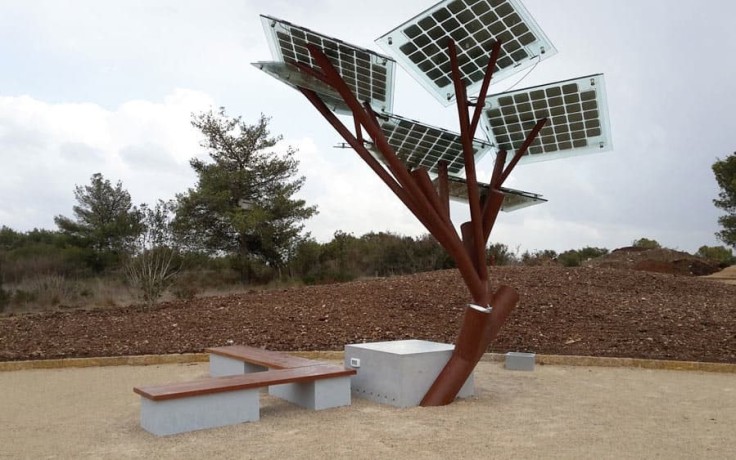In the last 200 to 300 years, man has been accelerating at an exponential rate towards technological advancement that is of astronomical proportions. From the science fiction TV shows which depict the existence extraterrestrial beings, wielding super advanced technology which even enables them to move through both time and space, to some of the greatest inventions harbored by some of the world’s most powerful democracies; it is evident that there is constant search, research and development to improve what is already in existence.

But what is really driving this innovation in technology need? Is it conflict or competition? Human need for recognition, making work easier, scratch that, making life easier? In my opinion, it’s all this and much more. It is often said that necessity is the mother of invention and what naturally occurs to us, provides the need to create just like our Creator intended for us. Nature itself has inspired over 80% of the world’s technological advances.
From the mimicking of how forests provide oxygen in the atmosphere (from the atmosphere), to how the Wright Brothers mimicked the physical characteristics of a bird to make a machine which could travel through the air and how civil engineers mimicked the great beaver to design and build water dams of immense scales, nature indeed has all the knowledge.
In the words of Ralph Waldo Emerson, “when nature has work to be done, she creates a genius to do it.”
So what is this post about really? This is about a little rabbit hole I went through to see some of the most naturally inspired technology, in my eyes, of this age and the hole is referred to as Biomimetics or biomimicry. Biomimetics or biomimicry is the imitation of the models, systems, and elements of nature for the purpose of solving complex human problems. The terms “biomimetics” and “biomimicry” derive from Ancient Greek: βίος (bios), life, and μίμησις (mīmēsis), imitation. Bionics is a closely related field. Living organisms have evolved well-adapted structures and materials over geological time through natural selection. Biomimetics has given rise to new technologies inspired by biological solutions at macro and nanoscales. Humans have looked at nature for answers to problems throughout our existence. Nature has solved engineering problems such as self-healing abilities, environmental exposure tolerance and resistance, hydrophobicity, self-assembly, and harnessing solar energy.
Nature is divided into two distinct worlds: Flora representing the plant kingdom and Fauna, representing the animal kingdom. Thinking about it, you will start to realize that almost everything that has been invented or is going to be invented IS nature-inspired: but I will talk about what really gets my inspirational juices going as an engineer once I was deep in the rabbit hole.
“I think the biggest innovations of the 21st century will be at the intersection of biology and technology. A new era is beginning.”
-Steve Jobs
FAUNA
Harvesting water like the Stenocara beetle.
It’s really no secret at this juncture: access to water is pivotal to any sustainable civilization and life on this planet in general. While some locations on the globe have bountiful water resources such as lakes and rivers, more arid climates must make do with limited precipitation. Technology derived from a beetle thriving in one of the harshest environments on Earth may very well help start the next generation of clean water harvesting.

The Stenocara beetle lives in the arid African Namib dessert, but the dime-sized critter has an evolutionary hack to help it literally pull water out of literal thin air. A pattern of nodes along the beetle’s back enable the creature to collect moisture from the morning fog. The droplets then slide off the bumps into small channels towards the beetle’s mouth. Academics are currently using this research to develop biomimetic patterns capable of harvesting water from the air. This will be game changing technology, geared towards achievement of sustainable development goals in regards to having accessible clean water for all.
Ventilation systems inspired by termites.
Oftentimes, biomimicry isn’t simply about mimicking an anatomical or evolutionary niche of a species. Sometimes, we can even take cues from the structures these animals build to create better life support systems for ourselves.

Termites often get a bad rap because of their destructive properties. However, termites are infamous for creating some of the most elaborate ventilation systems for cooling on the planet. Even in some of the hottest places, these termite mounds, remain exceptionally cool inside.

Using an intricate network of intentionally air pockets, the mounds create a natural ventilation system using convection. The engineering firm Arup built an entire shopping center in Zimbabwe based on this natural convection system. Currently the system uses 10 percent less energy than a traditional air-conditioned facility.
FLORA
Wind turbines inspired by trees
Wind has become one the key sources of renewable energy and this is because of its natural occurrence. Huge turbines are set up to harness and generate electricity from this resource. But often, one of the major complaints about clean energy installations is that they’re eye sores. Large wind turbines or solar arrays are considered obstructive to views or harm/disorient innocent birds flying around these structures’ air spaces.

Designers and researchers have come up with a few different ideas to solve this problem, like vertical wind turbines that blend into the scenery like these beautiful turbine trees created by New Wind.

The 36-foot-tall steel structures feature 72 artificial leaves that operate as mini vertical turbines all around the “tree.” When the wind blows, the leaf turbines rotate and quietly produce energy. The cables and generators are integrated into the leaves and branches so that the turbine operates almost silently.
French entrepreneur Jérôme Michaud-Larivière came up with the design one day while noticing the way the wind rustled the leaves on trees, lifting and spinning them, and he wondered if a wind energy device based on that could generate energy. His design so far has a power output of 3.1 kW, which isn’t a huge capacity for energy generating, but a street lined with these wind trees could power city street lights or help to offset the power consumption of nearby buildings.
Solar energy generation inspired by trees and flowers
Would you believe that one of the most common ‘gripes’ about solar energy is that it’s not aesthetically pleasing? What’s not to love about the glimmer of sunlight catching a polycrystalline panel or a row of homes generating clean, renewable energy for their community? Clearly some folks have never seen the billowing emissions from a diesel plant or even worse, a coal plant I suppose.
Fortunately, there are several new solar-powered structures taking root all around the world which are sure to enchant even the toughest art critics out there. Taking their inspiration from nature itself, these ‘solar trees’ are both regal and renewable. More importantly, they’re often providing the much-needed inspiration we all need to live more sustainable and environmentally-friendly lives.
- West Bengal’s ‘Solar Tree’
A CSIR laboratory in West Bengal, India’s fourth-most populous state, recently designed a 3-kW solar-powered tree that miraculously only takes up four square feet. Given the lack of large tracts of land suitable for conventional ground-mounted solar arrays, the solar tree holds great promise for states like West Bengal and Bihar.

“The challenge was to come up with a design so as to generate more solar power in less land space,” says Sibnath Maity, a chief scientist at the Central Mechanical Engineering Research Institute (CMERI) in Durgapur. According to Maity, each ‘branch’ of the tree holds up to 30 photovoltaic panels and the complete ‘tree’ is capable of powering about five households. I think this can easily be replicated here on the African continent with much ease.
Other tree designs in the world market today are Israel’s Sologic eTree capable of producing roughly 7 kilowatts of power per day and can provide electricity day and night.

- The ‘SunFlowers’ of Texas
No list of exotic solar-powered sculptures would be complete without mentioning Austin’s own solar “SunFlowers” though—as you can probably guess from the name—there is little resemblance to a tree. Located in the Mueller Redevelopment—a solar symbol in its own right—the Mueller Austin Solar SunFlowers have quickly become an Austin cultural landmark celebrating sustainability and a commitment to using clean energy alternatives; a garden of solar energy.
Natural sunflowers process solar energy to grow, these do it to light themselves at night and to put extra kilowatts of electrical energy into the grid. Since the installation of this type of system, they have been able to generate 386 Mega Watt hours of energy. This is over a period of close to 10 years!
This is to mention just but a few designs in existence.
Conclusion
Nature indeed has been inspiring technology since the stone age man who did his best to cope with the environment which he inhabits up to date. But this craze to advance technologically in every aspect of life has also contributed immensely to the erosion of our environment in this time and age. Nature, as ever inspiring, providing answers where none seem to be found, is providing solutions to the problems of the state of the world in the 21st century: Nature is offering Sustainability. A small shift in our mind sets, and we will all be seeing novel ideas from the most mundane natural phenomenon.
“Today in Engineering History: 2nd March 1972, U.S. spacecraft Pioneer 10 was launched. It passed close by Jupiter and Neptune before leaving the solar system. It is now more than six billion miles from Earth. #Astronomical “









You have a cool blog!! Keep up the good work!
LikeLiked by 1 person